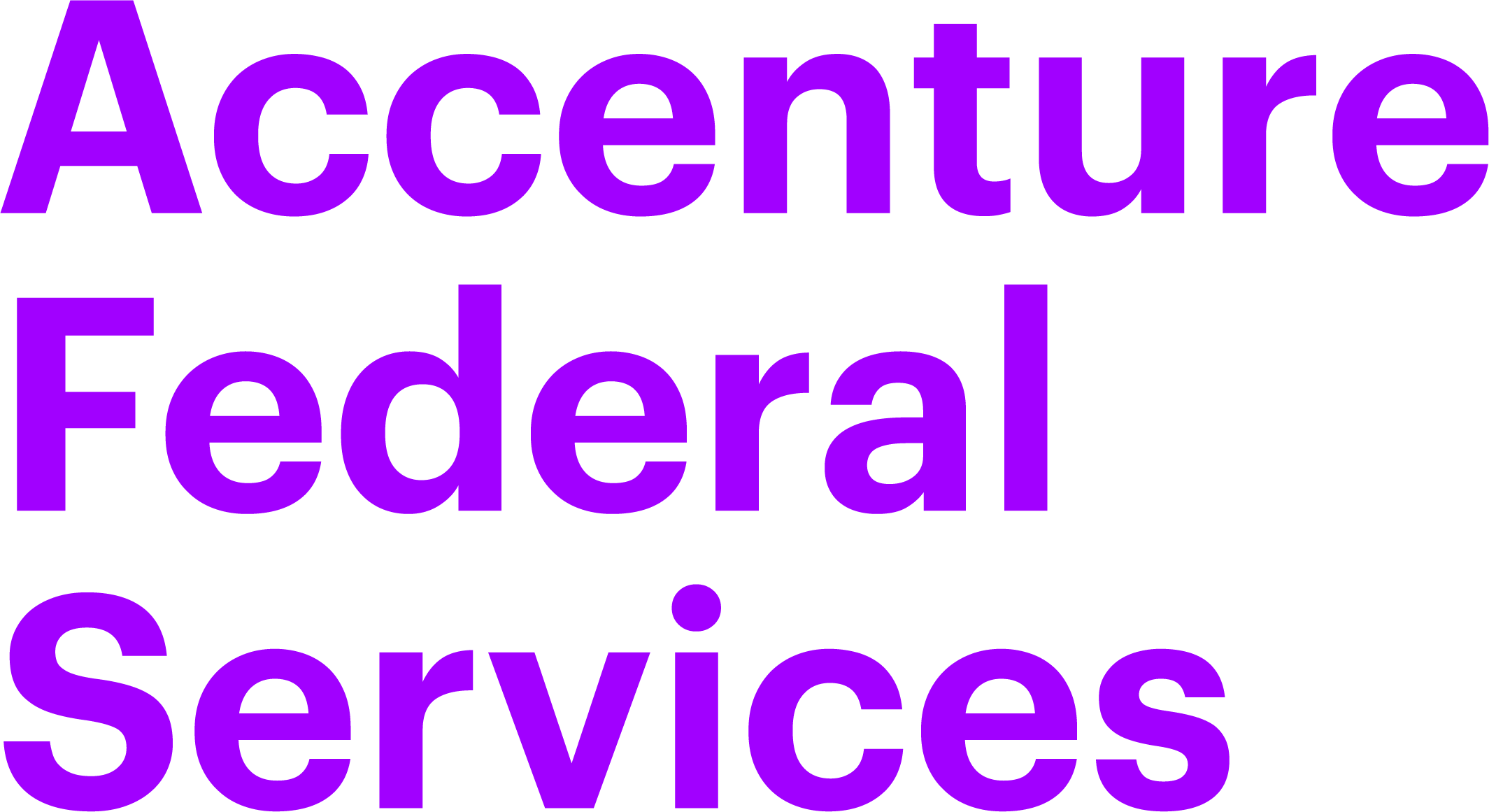Scaling Mission-Oriented Change in the Golden Age of Innovation
Presented by
Accenture Federal Services

Innovation is all around us and happening faster than ever. But moving from prototype to broad accessibility applied to real-world problems isn’t always easy.
Buoyed by the accessibility of cloud services, the increased pace of technological change is fueling a golden age of innovation as the times create more demand to fundamentally rethink how government delivers its missions. The hallmarks of modern innovation are made possible by the convergence of several trends opening up a new realm of possible for the federal government as it takes on the next challenges of the decade.
Government agencies seeking to provide services and experiences on par with commercial leaders are gravitating toward new technologies and new ways of working to avoid increases in technical debt, as well as declines in customer trust and workforce engagement. Defense and national security agencies must keep pace with — if not be ahead of — change, or risk losing advantage to adversaries constantly seeking new advantages. Add to that the issues of emerging security risks and consumers’ changing expectations around the sometimes oppositional forces of data privacy and ease of use, and the pressure is on.
A suite of emerging technologies predicted to have the greatest impact in the near future — sometimes referred to as DARQ, for distributed ledger/blockchain, artificial intelligence/automation, extended reality and quantum computing — often garner the most attention when it comes to conversations about innovation. But government leaders who have the most impact are going beyond the what and focused on the how.
Kyle Michl, chief innovation officer at Accenture Federal Services, approaches this challenge with an understanding that there’s so much more to innovation than just tech.
“With so many incredible new tools available to us, it’s easy to fall in love with technology for its own sake,” he says. “But successful innovation starts with the outcome in mind. Selection of the right technology is an innovation enabler.”
Putting an outcome-driven approach to work
“There’s a growing convergence of more demand for innovation and more supply of things that can enable innovation,” adds Christina Bone, chief innovation architect for Accenture Federal Services. Getting off to the right start — and staying on the right path — means staying focused on outcomes.
Putting this outcome-driven approach into action is driving innovation efforts across the government. For example, when NASA’s Aeronautics Research Mission Directorate (ARMD) was looking at the emerging urban air mobility (UAM) industry to find new ways to improve transportation, delivery, and data collection in cities, they chose to take a human-centric approach to define outcomes and areas where they could have the greatest impact. NASA's Convergent Aeronautic Solutions division worked with the Accenture Federal Services team to help identify ways to leverage urban air mobility for uses such as air taxis, air ambulances, drone deliveries and weather-tolerant operations. This helped shape a vision for the rapidly emerging market and explored uses of — and roadblocks to — UAM operations during inclement weather.
In addition to considering data and technology, the teams also weighed less-tangible factors such as impact on society and opportunities for collaboration. The result was a human-centered approach that can be used as a template for other problems.
Another organization used human-centric design to identify ways to reduce the 20% discard rate among kidney donations, despite so many would-be patients lingering on dialysis. Through interviews and workshops with surgeons, patients, transplant coordinators, procurement specialists and other stakeholders, team members from the Accenture Federal Digital Studio uncovered a need for more patient input, highlighted ways alternative metrics could positively influence match rates between patients and donors, and created an internet-based hub designed to streamline the transplant process.
Making innovation stick
Even with a strong outcome focus in place, Bone says, organizations can still face two challenges crucial to successful innovation: making it stick and making it scale.
Successful organizations are adept at creating ways to foster an open, curious, inclusive environment for problem-solvers, Michl says, “innovation is about doing things differently in new ways — and adjusting culture and processes is part of that.”
Building an embrace of innovation into the culture of an organization is essential for getting the buy-in needed for success. At one organization, for example, leaders dispersed 20 innovation trainers leading different teams on how to embed innovation-oriented practices into their day-to-day work and always ask, “What if?” That mindset was essential in helping the company develop a COVID-19 vaccine in record time.
Moreover, networking with a broader, more diverse ecosystem of stakeholders is often overlooked. Even organizations that may be able to prototype on their own would benefit from the diversity of thought that comes from enlisting best-in-breed partners in government, business, nonprofits, startups and academia, Michl says.
One federal department did this successfully, standing up an innovation hub that drives innovation into its supply chain by creating a pipeline of innovative ideas by holding workshops with stakeholders, informing users of new technologies and facilitating talks around what the needs are and how to pair them with new and innovative technologies.
Overcoming obstacles to deliver value quickly
Agencies face numerous obstacles in trying to scale innovation, including navigating regulations and hierarchies. But the biggest challenge isn’t unique to the government at all.
It’s emerging from a prototyping mindset to a “scale and deliver” mindset, Bone says.
Bone notes that the skills that serves people well when it comes to experimenting with innovation — being good at moving quickly, accepting discomfort and trying new things — aren’t always the same skills that are needed for releasing an innovation.
“It requires different skillsets to think through, ‘Is this secure? How much time is it going to take to deliver? Is it ready to scale to 100,000 users?’” she says.
Successful organizations establish a process for collaborative transition from prototype to delivery, prototype in ways that mirror the constraints of production and deployment, and align skilled resources to move projects from prototype to scale. They also incrementally release thoughtful designs that can have real-world impact, even if that means something is only 80% right when released. It’s better to share a prototype and get immediate feedback on new services and capabilities than toil away on a perfect solution that gets eclipsed by change and never makes it into users’ hands.
Clearing the path for innovation
Leaders have a unique role in helping clear a path for innovation with understanding, support, and input from all parts of the organization, including acquisition.
New acquisition approaches, including Other Transactional Authorities, or OTAs, and experiment-based contracts, have become available to streamline technology-based procurements using commercial terms. That, in turn, makes a broader spectrum of technologies available as many startups can’t immediately meet stricter regulations.
And the government is increasingly leveraging partnerships in which contractors offer their work in smaller installments, allowing public sector leaders to test in chunks before investing in bigger spend contracts.
The Department of Homeland Security’s procurement innovation lab, tasked with lowering barriers to entry and shortening the time to contract awards, is one example of how a government organization can innovate quickly and at scale. Cycle times have shortened from months or years to just a few weeks by providing incremental procurements. Now, the lab provides coaching and support to other agencies.
“Just imagine what more we can do when we can scale innovation across more of government,” Bone says.
This content is made possible by our sponsor Accenture; it is not written by and does not necessarily reflect the views of GovExec’s editorial staff.
NEXT STORY: The Invisible Threat: Building Cyber Resilience to Respond to the Rise in Third Party Cyberthreats





